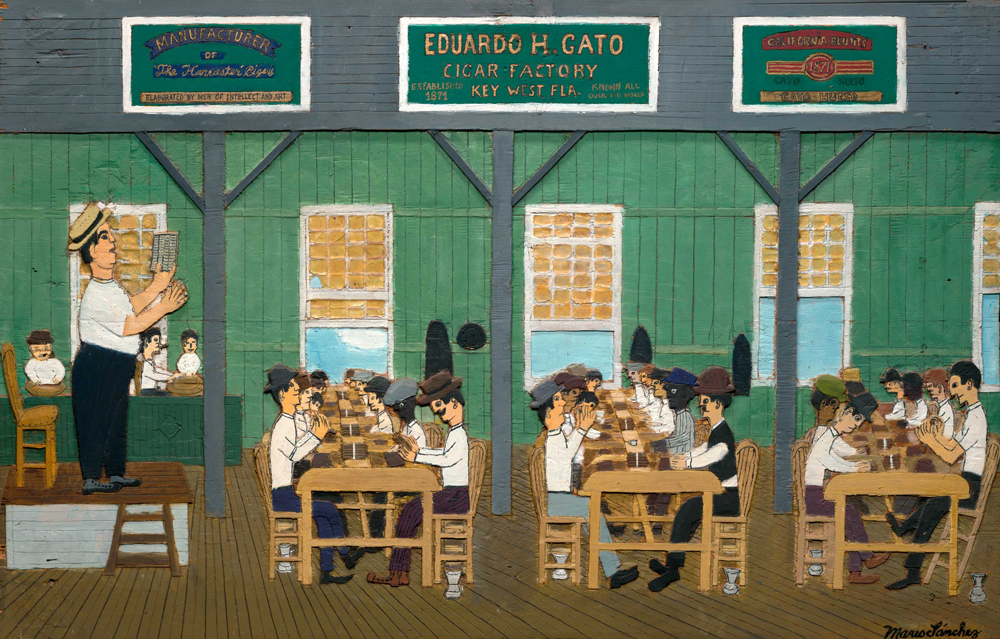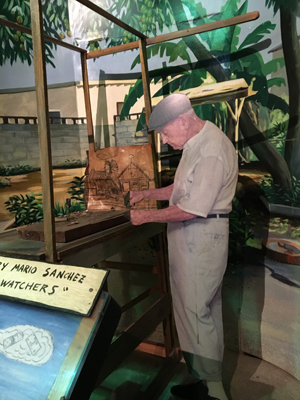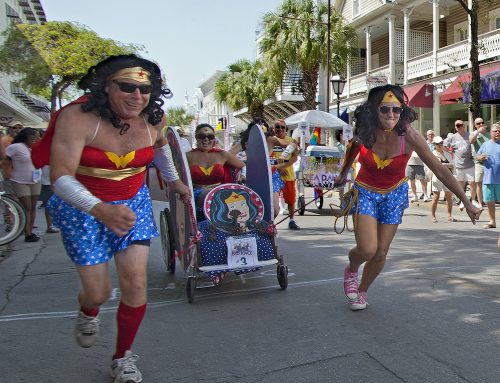For decades, Key West has been known as an island of the arts — and rightfully so, given the large and enthusiastic population of visual artists whose work enhances galleries around the island. That creative vibe is one of the elements that makes it such a magically enticing spot.
Chief among Key West’s artists, always and forever, is the late Mario Sanchez. During a career that spanned some 70 years, Mario depicted the Key West of his youth — and its often eccentric inhabitants — with intricate detail and affectionate humor.
Before his passing in 2005 at age 96, Mario was acclaimed as the 20th century’s greatest living Cuban-American folk artist. And although he’s been gone for more than a dozen years, he recently received another very significant tribute.
In late 2017 Mario was inducted by Washington D.C.’s famed Smithsonian American Art Museum, with a piece placed in the museum’s permanent collection. He’s the first Key West artist to earn this honor, and it’s stunningly well deserved — both for his talent and for the diverse, all-accepting worldview that flavors his work.
Mario Sanchez’ subjects are street vendors and shopkeepers peddling their wares, dancers and musicians, gossiping women and chicken thieves, mischievous children, native fish and Cuban cigarmakers practicing their craft. All are portrayed in bas-relief carvings known as intaglios, and painted with brilliant primary colors.
His pieces feature creative renderings of real people who shaped the Key West landscape from World War I through the Depression. His work also spotlights structures that were then and still are island landmarks, including Ernest Hemingway’s one-time home, the Key West Lighthouse and the San Carlos Institute.
When Mario worked, he first sketched his images on brown paper grocery bags. He then transferred them to cedar wood and created his intaglios, incorporating subtle humor and reflections of Key West’s intrinsic diversity.
Adding the bright colors of the tropics, he produced extraordinary primitive art. With simple brushes and chisels, and unparalleled creativity, he preserved and memorialized the rich history of the island he loved.
“Mario’s folk art blends a great sense of artistic power, individuality, and technical virtuosity with the irrepressible, candid charm of the unschooled,” said Nance Frank, director of Key West’s Gallery on Greene.

Mario’s intaglios portray lively Key West scenes with vivid colors and subtle humor. (Photo courtesy of Gallery on Greene)
As well as representing Mario’s work in her gallery, Nance has authored several books on the artist and coordinated the donation to the Smithsonian’s collection.
And the donated piece is pure Mario — the artist at his best, and a subject that represents not only his own heritage, but also a unique view of an industry that helped shape Key West. The painting depicts Mario’s father reading to cigar makers at the island’s Gato Cigar Factory.
In the 1890s, the factory employed 500 Bahamian, American, Cuban, Chinese, Jewish and Italian men and women workers who selected tobacco, cut and rolled or fabricated cigars. As they worked, they listened to readings delivered by a factory reader, or lector, to break the monotony of the work. The industry was so successful that, at one point, Key West was known as the cigar manufacturing capital of the world. The island’s factories produced an astonishing 100 million hand-rolled cigars each year.
Now anyone visiting the Smithsonian’s art museum can discover this important part of Key West’s multifaceted (and multicultural) past — thanks to the unforgettable magic of Mario Sanchez.
To learn more about Mario and his distinctive artistry, click here. For information about the Florida Keys’ rich cultural scene, just click here.






